The experience of drinking tea is as important as the leaves themselves, perhaps moreso. Those of us who dabble in writing about tea do so from a rather impersonal perspective - the writing is more about the tea than it is about us. However, every now and again, it's nice to find out a little bit more - this article is in response to the surprising amount of correspondence that has landed in my "inbox" over the week-end concerning the last article, "Wulong and the Willow".
Do please rejoin us on a later day if you'd like to read about more about tea.
The house-garden
The houses (and therefore the gardens) of the English are, according to the Economist, "famous for being small and expensive". Our hourse definitely fits the bill, but we have put a great deal of love into it, and have made it into a rather good home, we like to think.
Yesterday, I took the opportunity of an afternoon at home in the sunshine to knock up a watercolour plan of our garden, in response to those of you, dear Readers, who asked for a little more data.
It is a long, thin garden, because the houses here are arranged so that their gardens are parallel. They date back to the mid 1930s, where they were originally intended as being accommodation for workers at the newly-built Morris car factory in Oxford, the heart of the English motorcar business. For better or worse, Morris and his cars transformed the face of the city. Betjeman writes about this exact topic in a famous poem.
The houses have been variously upgraded in the eighty years since then, and we have done a lot since buying the place in 2008: we have stripped the property back to the bare bricks and replaced everything. Floors, wiring, windows - the lot.
The garden has needed an equal amount of work. The property was owned by an old lady, who bought it in the 1980s for less than 10% of the price for which we bought it (!). The garden was neglected, filled with concrete, steel, and decaying buildings, and this year marks the first at which we can really say "the garden is sorted out". It needs time to grow, but the design is there - thanks mainly due to Lei and her mother, while my contribution was the heavy lifting.
Above, the house garden - that portion nearest the house, past the patio (shown in the previous article). It ends in a patch of fruit trees that we planted in 2010, along with the arrival of our son, Xiaohu. It is filled with flowers and the scent of honeysuckle, and is that section of the garden designed to be enjoyed every day.
Centre-Garden
The centre-garden was the focus of the last article, being dominated by a very old willow, who provides cover, company, and also sucks up huge amounts of water that would otherwise turn our land into the marsh after which the area was once named (heh).
This place is less heavily used than the house-garden, and so is a little less floral, and more planted with larger trees that will ultimately be visible from the house. Under the willow, one feels "hidden away", in a quiet world. It is a very good spot for tea.
The vegetable garden
Finally, following the path, a screen of fruit trees hides the vegetable garden, which is entered by walking under a pair of red-apple trees. Here there is a small lawn, perhaps for playing croquet with Xiaohu when he grows up, as I once played at home with my family, bordered by more fruit trees (apples, pears, and walnuts), and a long vegetable patch. It is here that Lei and her mother grow our jiucai - a "garlic grass" type of vegetable which, I am reliably informed, is "healthy for men". This last is usually accompanied by a waggling of eyebrows.
The building at the end is a large contruction put together by some local carpenters, who did a very good job. A photograph will testify to their handiwork later...
Pictured below, the overall plan, with all three sections of the gardens shown in series.
Pushing through the fruit trees, the vegetable garden gets a lot of sun, as pictured below.
The building at the back is a fun place to hide out, and has a cosy porch that offers shelter from the frequent rains...
Xiaohu is very pleased with himself, as he can (just about) get up onto the chairs himself now.
Sitting on the porch, the willow tree can be seen from the far side, along with a part of the rear lawn. The vegetable patch is just out of shot, to the right. Somehow, Lei has managed to train fragrant honeysuckle to climb all over the porch...
Of course, one of the pleasures of a garden is watching it grow. The fruit trees are at most two years old, but generate fruit in large amounts, as if they were making up for lost time.
Perhaps the garden wishes only to show its appreciation for being appreciated, after all this time.

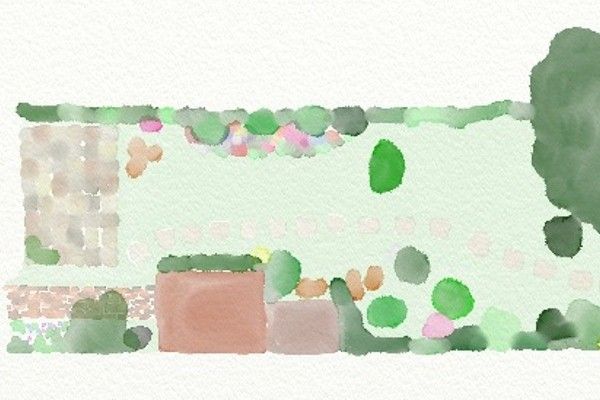
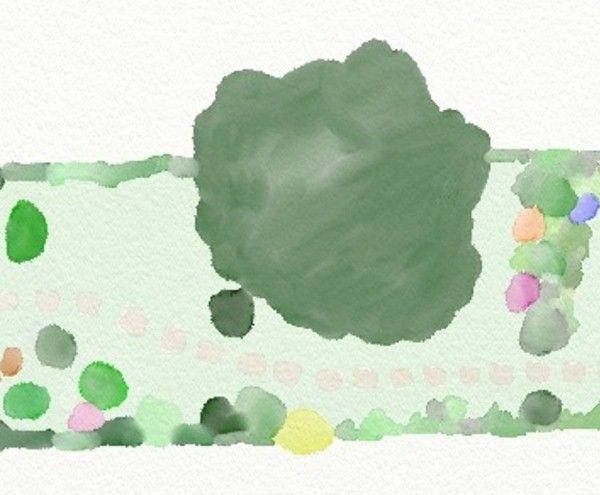
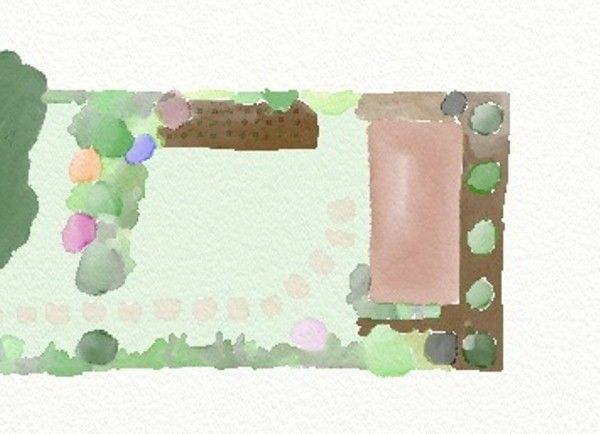
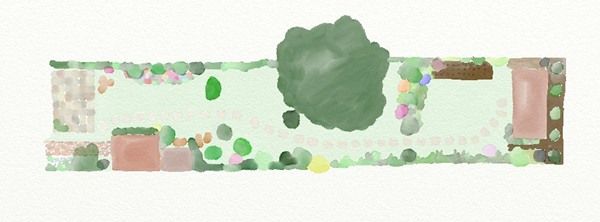
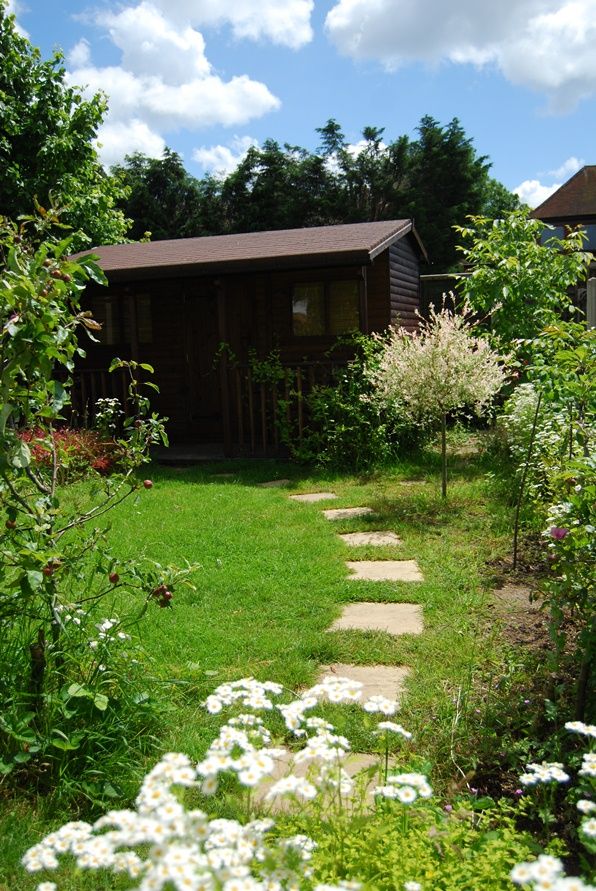
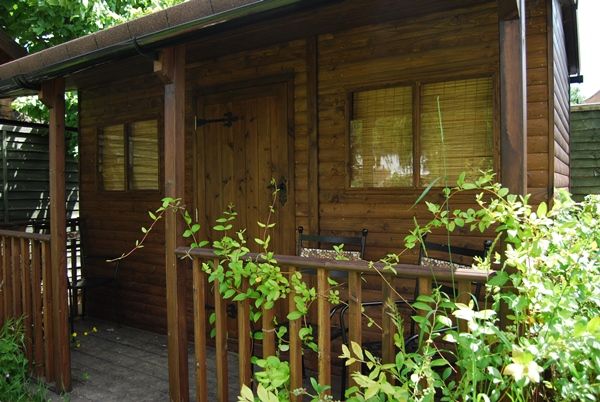
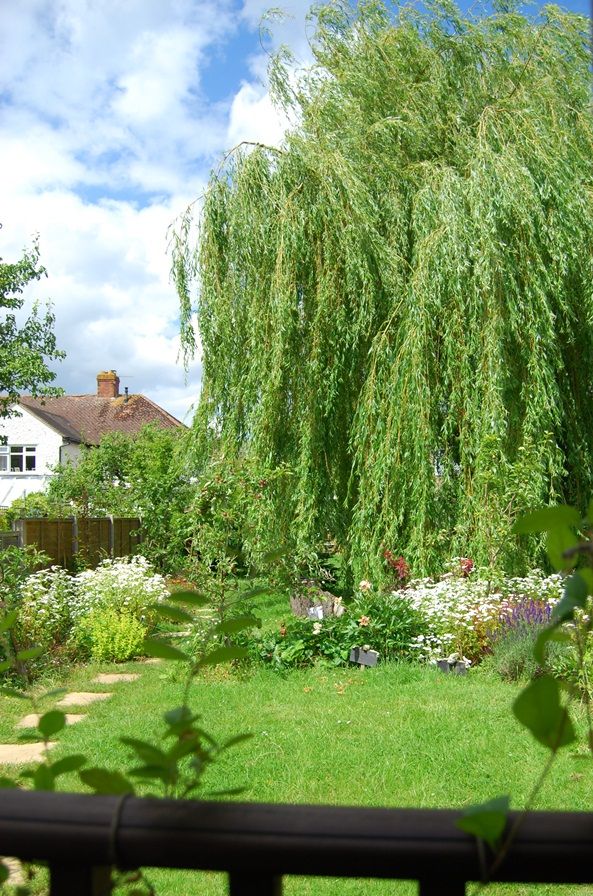
11 comments:
/me snorts
and hah!
When I'm not thinking about tea these days, I'm thinking about figs!
We used to have a willow, but willows are not long-lived trees. And also have gone out of fashion.
Anyways, natural born hoarders here. What? You thought I just came into the puerh world by storm and grab everything in sight? Hoarding is a finely aquired skillset, evidence by our totally disorganized yard stuffed with rare plants, and not weeded at all. In the chaos of it all, it still manages to be impressive, and one of these days, I hope our house is fixed up enough to have guests and host a teaparty of my own. I mean, it doesn't get better than to be absolutely permeated in citrus scents from the large number of mock oranges, citranges, a lemon or two, along with dogwoods and azaleas. Or down at the dock, down past tree trunks waaaay bigger around than you can hold, with a gargantian magnolia tree with huge 18" leaves, rare and heavenly scented viburniums, and our very own honeysuckle experiment on the dock!
I mean, plans go awry, but if you've got the cash and the stability to keep your place, comfortable neglect will make for a yard that changes every single day of every single year, if you only the will to see.
And when you're old, and the fruit trees are old, you can look forward to the leftovers that the squirrels, chipmunks, raccoons, and possums, never mind the birds, deign to leave you. I do plan to fight a little bit for my figs, which at about 20 years, is producing rather first class fruits. And all I thought it was good for was growing as tall as it can possibly get, and squeeze out the neighboring japanese maples and loquat. The keiffer pear, on the other hand, has repulsively tough skins, so no need to war for the harvest there...
--shah8
Wow. Just. Wow.
I'll hold my tongue about the previous comment....
Hobbes, you have a great thing going there, it's absolutely stunning. What's important is that you and Mrs. Hobbes find it relaxing, and it brings you peace and happiness. who cares what sort of foliage is planted in there? If it offers a sanctuary - let it be a desert-scape!
Dear Shah,
I like the idea of the garden ending in a dock; water is very soothing. The closest we will get is the introduction of a pond in the next few years, I think.
The notion of comfortable neglect is appealing! However, it doesn't really sit with the personalities of Lei and me; we are too careful and concerned with details. We let the garden grow on its own for one season (which was, amusingly, when Mr. and Mrs. Essence of Tea came to drink with us in the garden), and have since decided that we prefer it a little more well-kept. Low maintenance, but well-kept. It suits our latent finnicky / Zen tendencies. :)
Like you, I intend to fight for my figs. The previous owner planted a fig tree almost under the willow tree. We recently moved it to a new location in full sunlight, and it has since thrived, growing greatly during the last season. I feel that it is "my tree". The figs taste very good...
Dear Centranthus,
Lei and I agree with you; there are few places in the world that we would rather be than in the comfort of our cosy garden; though small, it is definitely "us".
Toodlepip,
Hobbes
How does Lei approach the idea of fruiting plants, if I may ask? My shallow impression was that Mainland Chinese were much less prone to have fruiting trees or an interest in high quality fruits than Japanese or Taiwanese, or virtually any of their neighbors. Not like there common asides about a peach or litchi in the yard...
--shah8
Don't take this the wrong way--I appreciate your writings and feel affinity with your garden aesthetic (used to have a nice one myself), but I would like it if more tea bloggers integrated aspects of life that are not so inherently introverted/quiet-old-man-esque/nerdy into their tea writings and drinking. Would help give the impression that you don't have to be a fussy gentleman type just to enjoy good tea :P
I mean, I also sit outside and enjoy my tea under a tree. Frequently. But I also use the energy of tea for use in dynamic energy--i.e. teaching, throwing people, jamming on my guitar, riding up gnarly hills on my bicycle. This is yin and yang. Strangely enough, I find the Western appreciation of tea to mostly ignore this side of things--yet, consumption of find, qi-stimulating tea and the practice of martial arts is a combination that goes back very far in Asia. As I do both, it is just disheartening to me that these two sides seem on opposite planets, here in the US/Britain, etc...
Do you get visited much by mossy under the willow tree or in the garden?
Would be a mission to pull that off in most parts of asia.
One word for your amazing garden - Tranquility
Dear Shah,
It's always dangerous to generalise about 1.4 billion people! Lei's family home has a courtyard with some well-established fruit trees, notably pomegranate and fig, which provide much-needed shade, when it's blisteringly hot in summer. :)
The hawthorne is popular there, too, the fruits of which are seen as being very healthy.
It is my experience that the Chinese are very particular about their food, and insist on good fruit - this amuses me, because the English are notorious for being unfussy and eating almost anything, no matter how dreadful others might think it. :)
Toodlepip,
Hobbes
Dear Nick,
What can I say? Our writing is really just a product of our personalities. If many of us write this way... it's probably because we're quite similar in temperament, outlook, and interest, I suspect.
My daily life is absurdly hectic, as I'm sure is the case for many of us. My time at the teatable is a moment of peace in between the chaotic (but very welcome) duties of being a father, husband, lecturer, and researcher. My "off-line" interests reflect my personality and temperature, as I'm sure is the same for the many like-minded souls who, for whatever crazy reason, choose to write about tea. It is a most bizarre habit, after all, when you take a step back and observe it in all its strangeness; to write about it, doubly so.
In meetings with tea chums, I have found them to be similar folk to myself; I imagine that this is one of the reasons that our writing takes on a certain flavour.
There is always space for more writing, however, and it would be undoubtedly charming to read a blog dedicated to the kind of pursuits that you describe - perhaps you would like to take up the pen yourself!
Toodlepip,
Hobbes
Dear Spikey,
Our garden suffers many incursions, most often by slugs! We constantly fight the never-ending hordes of slithering slugs. Moss, however, is one of the few things from which we are unafflicted. At least moss cannot eat your strawberries!
Toodlepip,
Hobbes
One day, I'd like to hear a story about that pomegranite!
--shah8
Your backyard tea space is BEAUTIFUL! If I lived in the UK I would definitely be seeking out your and your wife to help in designing my own tea oasis. So lovely to see these photos. Thanks for posting them!
Post a Comment